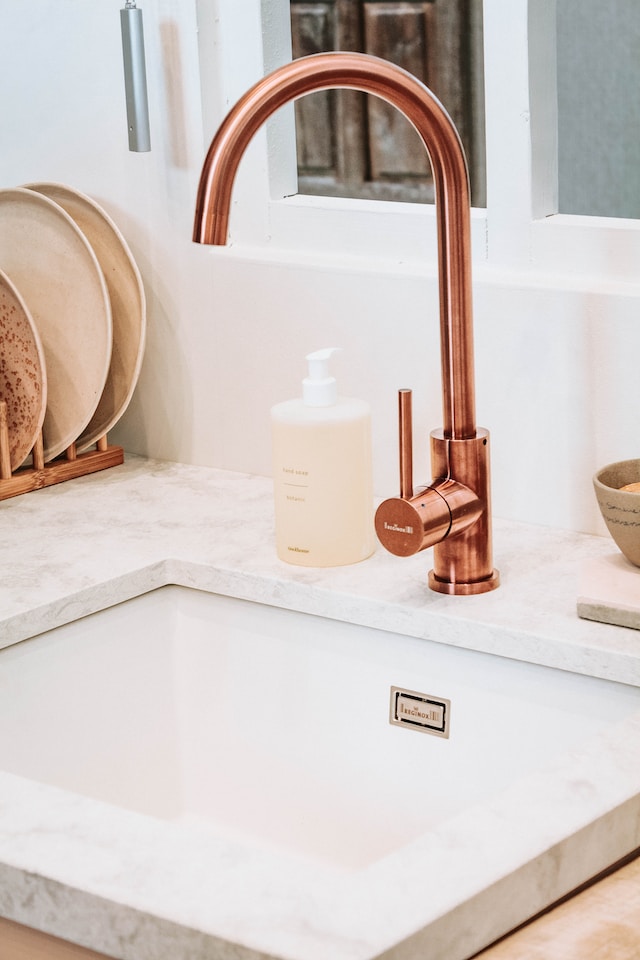All opinions are mine and mine alone.
5 Tips for Fixing a Loose Kitchen Faucet
A loose kitchen faucet can be annoying, causing it to wiggle around or leak when you use it. Luckily, the average homeowner can fix a loose faucet. Try these five tips for tightening up a wobbly kitchen faucet.

Tighten the Base Nuts
The base nuts that mount the faucet to the bottom of the sink are often the culprit when kitchen faucets are loose. Simply tightening these nuts with a basin wrench or locking pliers is the easiest solution. Turn off the water supply lines first and turn the faucet on to relieve pressure. Next, use the wrench to tighten the nuts underneath the sink. Tighten them evenly so the faucet remains straight. Turn the water back on and check for leaks. If tightening the nuts doesn’t secure the faucet, move on to the other solutions.
Replace the Plastic Gasket
Turn off the water supply valves under the sink, and open the faucet to drain any water left in the pipes. Use a basin wrench to loosen and remove the components. Thoroughly clean the faucet bonnet and gasket recess, then press a new rubber faucet gasket firmly into place in the recess. Reinstall the pieces, making sure all parts are properly aligned. Turn the water supply valves back on slowly to check for leaks. Tightening with a screwdriver might be required if minor leaks occur at the new gasket.
Use Plumber’s Putty
If tightening the nuts or replacing the gasket doesn’t work, try applying new plumber’s putty around the area where the faucet meets the sink. Turn off the water lines and disconnect them. Also, unscrew the nuts holding the faucet down and carefully lift the faucet to allow access underneath. Clean off any old putty residue and apply fresh putty per the directions. Replace the faucet, and retighten the base nuts and nuts that hold on the water lines. The plumber’s putty will seal any small gaps allowing the faucet to tighten up.
Change the Faucet Washers
Worn rubber washers around the faucet’s water inlet pipes can make it unstable even when the nuts underneath are tight. If the other solutions don’t work, unscrew the spout, handles, and dome kit from the faucet to check the condition of the washers. Replace any washers that are cracked or appear flat with new ones. Use washers made specifically for kitchen faucets, which are often fiber instead of rubber. Reassemble the faucet and tighten the nuts once again.
Install Faucet Lock Nuts
If your kitchen faucet still isn’t tight after trying all the above steps, a last resort is to install faucet lock nuts. These specialty nuts fit between the underside of the sink and the faucet nuts to distribute tension evenly and lock the faucet firmly in place. They can be purchased online or sometimes at hardware stores. Just make sure to get the proper size for your model faucet. Follow directions to install them correctly in place of normal nuts. Check for leaks and excessive movement once done before turning the water back on.
A loose kitchen sink faucet might take some patience, but with a little time and effort, you can likely get it tightened up properly yourself without needing to replace the whole faucet. Try these troubleshooting tips one by one until you find the solution that works for securing your wiggly water spout.



Speak Your Mind